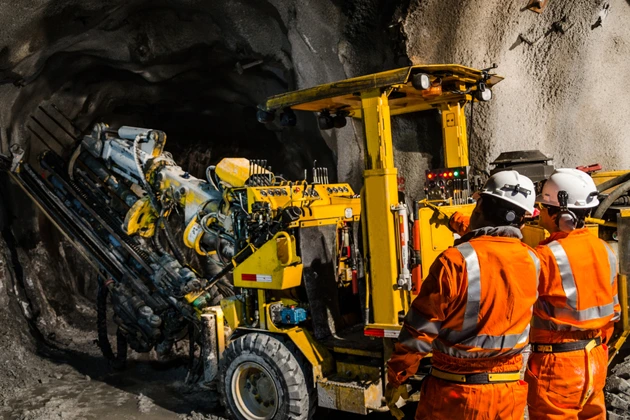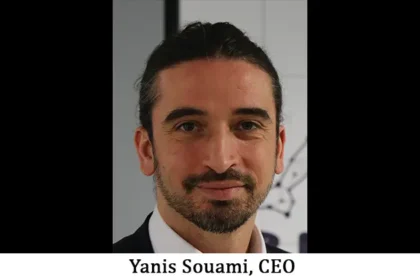Innovation has taken a turn across various industries, and the mining industry is no exception. With the latest developments, innovation in the mining industry has redefined mining practices. Advanced technologies and methodologies have collaboratively enhanced efficiency, safety of operations, and sustainability. Continuous improvement is the driving force of innovation, and in the mining industry, improving mineral extraction operations is the most considerable evidence of innovation. Discover how innovation is changing the picture of the mining industry.
Driving Forces of Innovation in the Mining Industry
Innovation is the bedrock of industrial excellence, and this applies to the mining industry as well. Innovation in the mining industry is driven by a range of factors that not only transform but also accelerate mining operations to a large extent. Let us explore the driving forces of innovation in the industry-
-
Efficiency
Efficiency in the mining industry is all about balancing production maximization and cost minimization alongside maintaining safety and equipment. Mining cycles often misinterpret efficiency as productivity, talking interchangeably about both, resulting in an uneven focus on either one of the two.
It is important to note that efficiency and productivity are two different things and should not be confused as the same. Efficiency in the sector aims to maximize resource availability to maximize production and eliminate waste. With innovation in the bucket, mining companies can significantly level up efficiency.
-
Productivity
Productivity deals with production levels within a period. It may include improving a mining method or a pit’s design to ensure the effective production of quality material. Innovation in the mining industry can boost productivity through technological integration.
-
Cost Reduction
Innovation can extensively reduce the cost of mine development. The need for cost reduction has shifted the focus of the mining industry toward innovation. From improving metal recovery rates to lowering energy and water consumption, the mining sector is embracing innovation to lower mining costs.
-
Minimizing Environmental Impact
The spiraled environmental impact of the mining industry has also paved the way for innovation to transform extraction, separation, and transportation operations through technological solutions. The need to reduce carbon footprint has expanded the way of innovation in the sector.
Innovation: Reshaping Mining Industry
Mining materials is at the heart of founding industrial society. Mined materials are used to construct roads, power stations, telecommunication networks, homes, and other infrastructure necessary for human living. By escalating innovation in the mining industry, we strive to improve its operations. As a catalyst of efficiency, productivity, cost, reduction, and sustainability, innovation plays a crucial role in redefining what’s possible in the mining sector. Read ahead to find out the ways innovation is reshaping the mining industry.
Espousing Innovation in the Mining Industry
Technology and Practices are two key innovation catalysts observed in mining. Redefining the scope of mining operations, innovation in the mining industry has reached a crescendo. Find out how.
Technological Innovation
Technologies have transformed the mining landscape in a once unimaginable way. The mining industry always has demands for safer procedures and training, and technologies have come up with efficient solutions to address it-
-
Drones
Mining drones have enabled operators to map and survey mining sites. On-foot mapping and surveying are cost-burdening, but with mining drones, we can now rapidly relay geographical imagery and data to surveyors. By using drones, operators can now conduct visual inspections of sites and equipment.
-
3D Printing
3D printing technology allows printing and replicating expensive equipment, helping companies to save a fortune. With this technology, any damaged mining equipment can be replicated with accuracy. This innovative technology has the potential to print and install parts onsite to damaged equipment in no time without transportation complexities.
-
3D Mapping
3D mapping technology presents mining sites digitally with detail and accuracy. Areas of excavation can easily be pointed out using this technology along with queries, waste deposits, and transportation route mapping.
-
Virtual Reality
Innovation in the mining industry witnessed a miraculous turn with virtual reality (VR). It is widely used to train employees and workers in the industry. VR allows immersive training facilities using realistic training simulations for workers to practice complex mining tasks in a safe and controlled environment. It also allows virtual tours of mining sites, avoiding safety issues concerning visiting dangerous sites physically.
-
Artificial Intelligence
AI serves as a game-changer in fostering innovation in the mining industry. It leverages ChatGpt, BingChat, and other tools to improve operational processes. Smart data and machine learning have helped in rapid decision-making. By using advanced algorithms, data is analyzed precisely concerning valuable minerals, optimal mining sites, and more.
-
Automation
Automation in the mining industry offers benefits such as Truckless conveyor-belt ore transportation systems, drones, process automation, site monitoring, drilling, and ventilation systems.
-
Digital Twining
A digital replica of the mining ecosystem is crafted using digital twining innovation in the mining industry. Replicas of mining equipment, assets, geographical formations, and other objects are created using this technology.
Innovation in Practices
Some innovative practices of the mining industry include:
- Sustainable mining: It includes the use of eco-friendly equipment, rehabilitating mining sites, and reusing mining waste.
- Environmental Protection: Reduced greenhouse gas emissions, waste management, and adopting renewable energy can lower environmental impacts.
- Improved planning and management: AI is used extensively for data analysis and data representation to map mining sites and make informed decisions concerning mining processes.
- Risk Reduction: With digital twining, security risks are reduced as it can simulate conditions.
Conclusion
As technology continues to evolve, innovation in the mining industry is likely to witness miraculous transformations in the coming future. This not only expands the innovation boundaries of the industry but also increases the potential of the mining industry to maximize material production.










